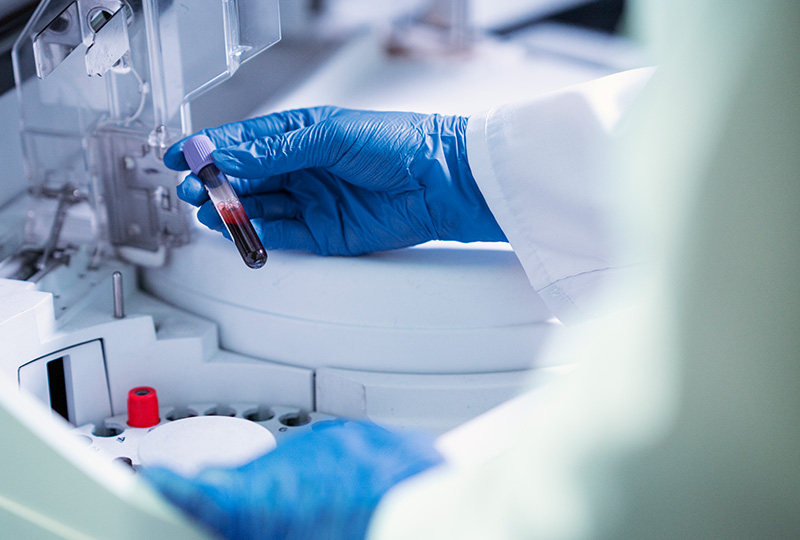Insights
The real-world patient impact of bacterial sepsis and antimicrobial resistance

Sepsis occurs when our immune system overreacts to an infection. According to a 2020 report by the World Health Organisation, sepsis accounts for approximately 20% of all deaths worldwide and is the leading cause of death in hospitals. This condition disproportionately affects the elderly, newborn infants and their mothers, as well as those currently pregnant.
Bacterial infections are responsible for most cases of sepsis and antimicrobial resistance (AMR) – the adaptation of microbes such as bacteria to overcome the effects of antibiotics – further complicates treatment. This poses a particular risk to patients in hospitals and intensive care units (ICUs) due to common antibiotic-resistant hospital-acquired infections such as MRSA, C. difficile, and Pseudomonas.
Sepsis and AMR are interrelated challenges and together pose a significant threat to patients today and the future of medicine. In this article, we explore the consequences of sepsis and AMR for patients and clinicians today and ask where precision diagnostic tools could make a meaningful impact on the patient journey.
The sepsis patient’s journey
Sepsis is often difficult to recognise but early recognition and treatment are critical. Various symptoms may present at different times and anyone with an infection, severe injury, or non-communicable disease can be affected regardless of age or gender. In addition to those at disproportionately high risk, people living in low and middle income countries have an increased risk of death due to the difficulty in accessing timely medical care.
Typically, patients with suspected bacterial sepsis are immediately treated with broad-spectrum antibiotics upon admission to hospital and a blood sample is taken for a diagnostic procedure. The blood is cultured for several days to detect bacteria and, if bacteria are present and grow from this process, they are tested against an array of antibiotics of different types and concentrations to determine an optimal course of treatment. Essentially, a process of trial and error.
A sepsis patients’ survival rates drop 8% per hour and this long diagnostic procedure puts them at further risk. This procedure has another major shortcoming: it cannot prove the absence of bacteria. In nine out of 10 blood cultures, no bacterial growth occurs – but this does not mean bacteria are not present. Blood cultures may fail to grow for a variety of reasons and the long wait for a result means a patient’s condition will deteriorate severely without immediate treatment. The end result is that clinicians must treat 90% of bacterial sepsis patients without knowing precisely which antibiotic is most effective.
Limitations, complications and AMR considerations
Since their discovery by Alexander Fleming in the 1920s, antibiotics have played a leading role in human health. It is estimated they have helped increase our collective lifespan by over 20 years. But these life-saving compounds can also put organs like the kidneys and liver under additional pressure – especially in patients with underlying conditions – as well as
impact growth and development in newborns. Even if patients survive sepsis, it is a potentially life-changing illness and half of patients do not fully recover.
The WHO estimates that one-quarter of all sepsis cases in a hospital were hospital-acquired infections. The first-line sepsis treatment of broad-spectrum antibiotics also kills off beneficial bacteria in the gut and on the skin. Diminishing the natural microbiome leaves patients open to infection from hospital-acquired AMR pathogens like C. difficile and MRSA. Additionally, overprescribing antibiotics to patients in an effort to treat them can lead to the emergence of further antibiotic-resistant bacteria.
AMR pathogens were directly responsible for 1.27 million deaths (approximately 2.2% of global deaths) in 2019. The rise in AMR, driven by decades of liberal antibiotic use in medicine and farming, increases the risk that initial antibiotic treatment of sepsis patients could fail. In these cases, clinicians are further hindered in finding an effective treatment due to the long and often unreliable diagnostic method. While the correct antibiotics may be available, clinicians simply cannot know which to use without accurate data on the bacteria and its susceptibility to antibiotics.
Making an impact on patient outcomes
Sepsis patients face an agonising and traumatic treatment due to the severe nature of their condition. The current diagnostic procedure takes too long for rapidly deteriorating patients and often yields imprecise results. This forces clinicians to act on limited information, risking patient health and potentially exacerbating the already dangerous emergence of antimicrobial resistance among pathogenic bacteria.
We believe that rapid, data-driven precision diagnostic tools would enable clinicians to treat sepsis patients earlier and more effectively than today while taking the issue of AMR into account. Our mission is to provide clinicians with the information and options they need to treat sepsis patients – in a matter of hours rather than days – while managing the risk of AMR emergence.




